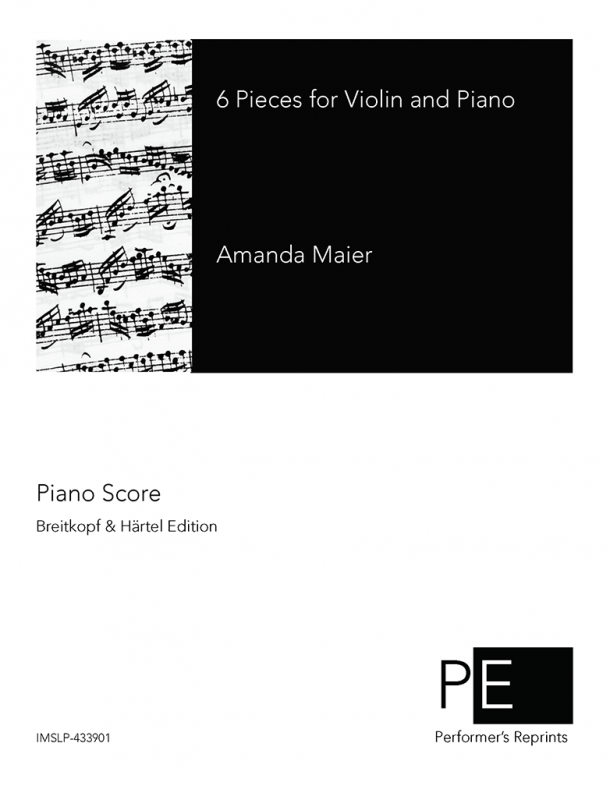Obscure Music Monday: Maier's Six Pieces for Violin and Piano
Amanda Maier (February 19, 1853 - July 15, 1894) was born in the Swedish town of Landskrona, and was quite an accomplished violinist, cellist, organist, and composer. Her initial studies in piano and violin were with her father, and later studied at the Royal School of Music at Stockholm, and was their first female music graduate. While she was there, she won numerous awards for her instrumental playing and compositions as well. After graduating, she moved on to the Leipzig Conservatory, to study composition with Carl Reinecke, and violin with Engelbert Rontgen. Brahms and Grieg spoke very highly of her compositions, though she stopped composing after she got married, and not many of her works were published in her lifetime.
Maier wrote Six Pieces for Violin and Piano in 1879, and each movement has its own wonderful set of characteristics and mood. In the opening Allegro Vivace, there are double stops and chords galore for the violin, with a dramatic and lyrical section in the middle. The Allegro con Moto in e minor is like a dark waltz with, and the third movement, Lento, revolves around a dotted eighth-sixteenth note-eighth note theme, and there's almost a Baroque feel to the violin line. In the fourth movement, Allegro molto, Maier directs the violinist to play with passionately (Leidenschaftlich) and writes the movement in such a way that many of the lines are naturally passionate, with long runs, biting spicatto, and extremely high notes. In the next movement, Tranquillamente, a melancholy mood is pervasive, and the violin line is thoughtful and beautifully sad throughout. The final movement, Allegro, ma non troppo, starts off in an exact opposite mood of the previous movement. It opens with a joyous, bouncy line, with two more thoughtful sections in the middle in minor keys, but the fun and liveliness returns, and ends with that mood as well.
Here's a recording of this fun set of pieces for you to enjoy!*
*As Amazon Associates, we earn a small commission on qualifying purchases.


